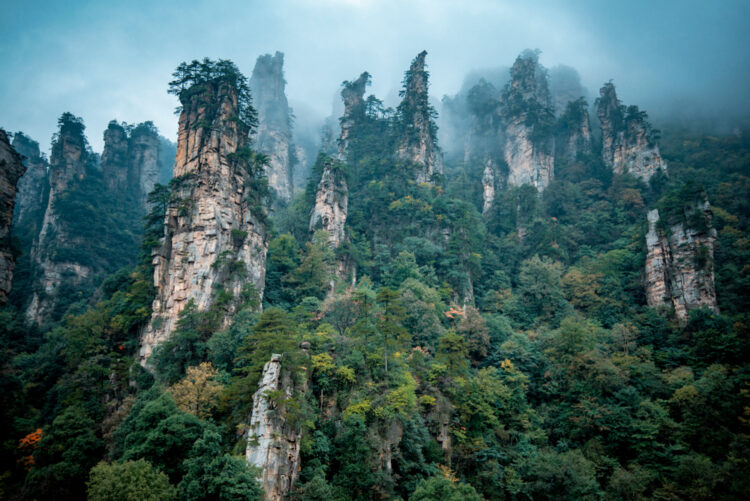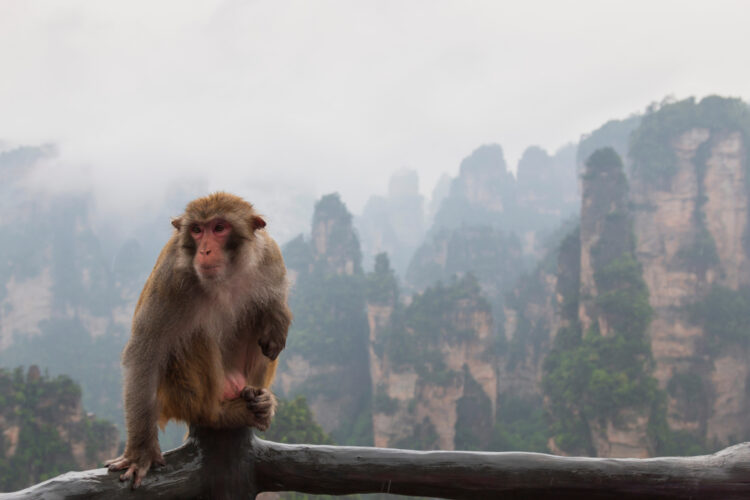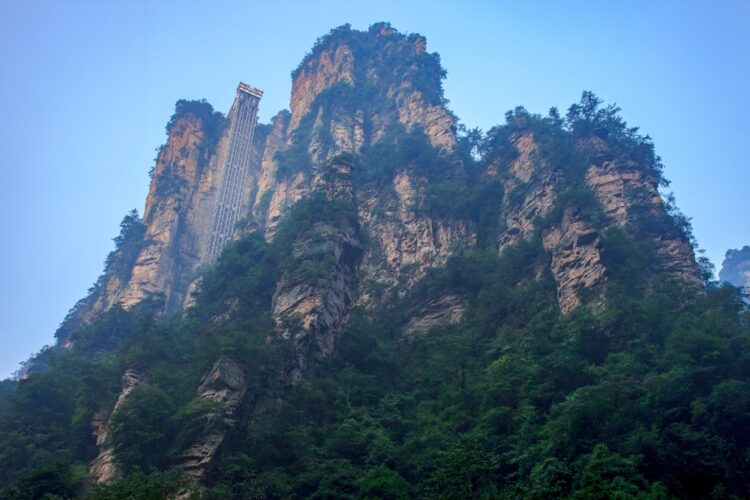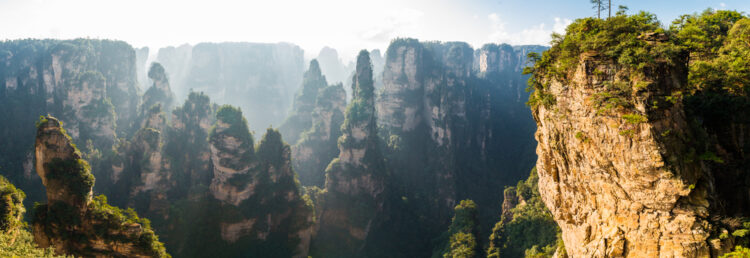Tianzi Mountain and Yuanjiajie in Hunan Province, China, offer visitors a surreal landscape that served as inspiration for the floating mountains in James Cameron’s blockbuster movie “Avatar.” The enormous limestone pinnacles, draped in vegetation and often veiled in mist, create an otherworldly atmosphere. The unique landscape of towering sandstone pillars, some reaching heights of over 3,000 feet, offer views that indeed seem to belong to another planet entirely.

The area was once a vast sea. Over 380 million years ago, during the Devonian period, layers of sandstone and quartz were deposited on the sea floor. Tectonic activity caused these layers to be pushed upwards, forming a high plateau. Over millions of years, water and wind eroded the softer parts of the rock, carving out the distinctive pillars and peaks we see today. The area’s subtropical climate, with abundant rainfall, supports the vegetation that clings to the rock faces. The unique geology also creates a special microclimate. The towering peaks trap moisture, leading to frequent mists and clouds that swirl around the pillars.
Numerous trails wind through the area, allowing visitors to immerse themselves in the natural beauty and discover hidden viewpoints. The ever-changing interplay of light, mist, and stone creates endless possibilities for both amateur and professional photographers. Further, the region is rich in local Tujia and Miao minority cultures and the many glass walkways and vertiginous cable car rides, provides plenty of thrills for adrenaline seekers.

The name “Tianzi” translates to “Son of Heaven,” a title once used for Chinese emperors. According to local legend, a man named Xiang Dakun led the local Tujia people in a successful uprising against oppressive rule. After his victory, he was declared the “Son of Heaven” by his followers, and the mountain was named in his honor. The area has been revered for centuries, with ancient Chinese paintings and poems celebrating its beauty. In recent years, its global profile has risen dramatically, particularly after the release of “Avatar” in 2009, which drew international attention to the region’s unique landscape.
Tianzi Mountain Nature Reserve is the core area, offering some of the most spectacular views. Yuanjiajie Scenic Area, part of the larger Wulingyuan Scenic Area, is home to the “Hallelujah Mountains” that inspired Avatar, and the Bailong Elevator, the world’s highest outdoor lift. Golden Whip Stream is a picturesque hiking trail that winds through the valley floor, offering a different perspective of the towering peaks. Zhangjiajie Glass Bridge, while technically outside the Tianzi and Yuanjiajie areas, this nearby attraction is the world’s longest and highest glass-bottomed bridge.

The Tianzi Mountain and Yuanjiajie area is now one of China’s premier natural attractions, drawing millions of visitors annually. Peak season typically runs from April to October, with July and August being the busiest months due to domestic summer holidays. During these times, expect larger crowds and higher prices. Spring brings comfortable temperatures and blooming flowers, creating a colorful landscape., while Autumn offers pleasant weather and stunning foliage as the leaves change color. While colder, Winter offers a unique perspective with occasional snow and fewer crowds. However, some facilities may have limited operations. To avoid crowds, consider visiting on weekdays and arriving at popular viewpoints early in the morning or later in the afternoon.


